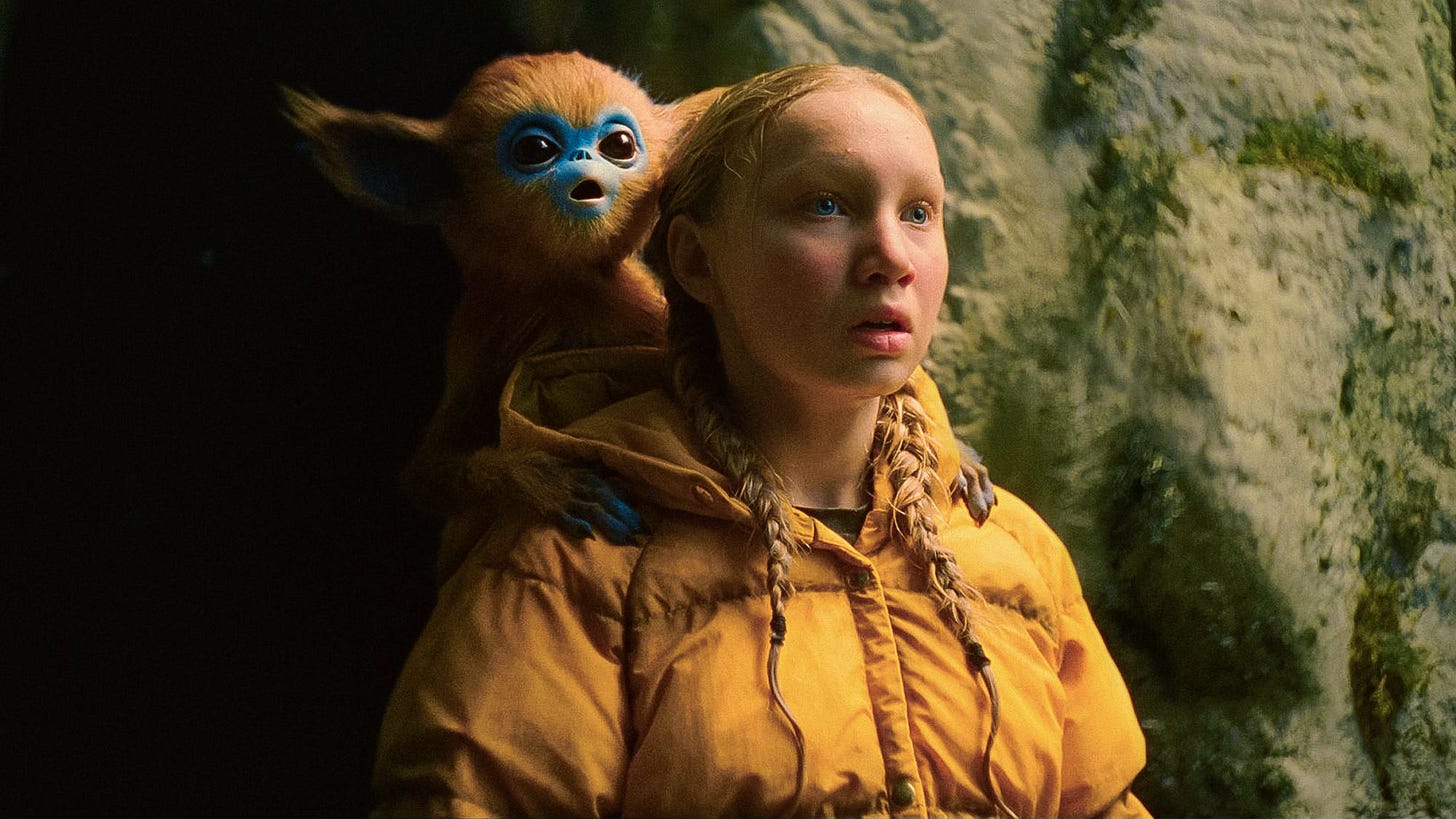The Legend of Ochi is a family-friendly adventure movie, a throwback to handmade fantasy fare like E.T.: The Extraterrestrial and The Neverending Story. Instead of a pack of boys on bicycles, our point-of-view character is a girl in her early teens named Yuri (Helena Zengel). She lives on an island in the Black Sea called Carpathia, a place where old and new commingle with each other in small towns and farmland, and where “wolves, bears … and worse” live in the woods and mountains. Yuri is lonely, the only girl in a group of children being taught by her father, Maxim (Willem Dafoe), to hunt monsters called ochi, who inhabit the wilds. Maxim keeps referring to the crew—most of whom are neighbor boys—as “my sons,” gendered language that pushes Yuri to the sidelines in her own family. When she finds a wounded baby ochi, she decides to run away and reunite it with its pack. She tries to blaze her own trail, defying what her father has taught her.
But it isn’t clear exactly what Maxim wants for his children. Dafoe plays the character with the bombast of a deluded man, a choice that raises the question: what do the parents of all the other children think about their preteen boys being taught to hunt and shoot at mythical monsters in the woods? We see so little of this world, other than Maxim’s house and the woods beyond, that the plot doesn’t seem grounded in much of anything. The stakes are unclear. The dialogue tugs at thematic threads such as abandonment, forgiveness, and becoming an independent person from one’s parents. Yuri’s journey to reunite the baby with its pack is loosely connected with her own desire to belong, though her wants and needs remain an unresolved and nebulous tangle of hurt feelings and defiance. Her motivation is apparent. The character has every right to feel abandoned. But the movie doesn’t manage to show those feelings in a cohesive way.
What the movie does make clear is its love for production design and practical effects. The ochi are portrayed by puppets, and writer/director Isaiah Saxon painted hundreds of matte paintings for the backgrounds. Every shot is filled with tactile imagery: scuffed-up boots; a bright yellow, puffy jacket that Yuri almost never takes off; the orange fur of the ochi. The baby ochi in particular seems to have been developed in a lab to be cute without being cloying. It watches the world through massive black eyes set in a bright blue heart-shaped face, its batlike ears reminiscent of Grogu from The Mandalorian. To communicate, it trills; the sounds leaving its mouth resemble birdsong. From the beginning of the story, it’s apparent that this is a fairy tale in the vein of stories like How to Train Your Dragon. There might be monsters in the woods, but they’re only monstrous because they’re misunderstood by humans.
The references to other stories—such as The Neverending Story, E.T., The Dark Crystal, and every movie Miyazaki ever made—serve as touchstones that signal where The Legend of Ochi wants to go. Unfortunately, they are more shorthand than homage; the references do so much heavy lifting that the movie neglects to fill in its own specificities. Yuri’s emotional journey is a hollow shell, a reference to richer stories, that leaves her unmoored without personal stakes to ground her. In the end, there can be no forgiveness because there is nothing specific to forgive, and nothing can be earned because the struggle feels so rote. The film is an achievement of production design and practical effects. But the look and texture of the movie say more about the filmmakers’ relationship to 1980s fantasy stories than they do about Yuri herself. She’s left isolated and alone in the woods in her own movie.—Sarah Welch-Larson
★★☆☆
The Legend of Ochi is in theaters nationwide now.





